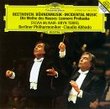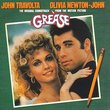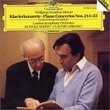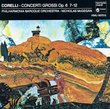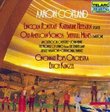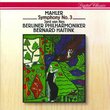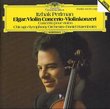| All Artists: William Alwyn, Richard Hickox, London Symphony Orchestra Title: Alwyn: Symphony No. 3/Violin Concerto Members Wishing: 1 Total Copies: 0 Label: Chandos Release Date: 2/10/1994 Genre: Classical Styles: Forms & Genres, Concertos, Historical Periods, Modern, 20th, & 21st Century, Instruments, Strings, Symphonies Number of Discs: 1 SwapaCD Credits: 1 UPC: 095115918722 |
Search - William Alwyn, Richard Hickox, London Symphony Orchestra :: Alwyn: Symphony No. 3/Violin Concerto
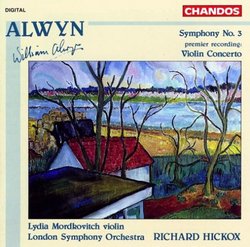 | William Alwyn, Richard Hickox, London Symphony Orchestra Alwyn: Symphony No. 3/Violin Concerto Genre: Classical
|
Larger Image |
CD DetailsSimilarly Requested CDs |
CD ReviewsAlwyn's 3rd symphony is outstanding Rodney Gavin Bullock | Winchester, Hampshire Angleterre | 03/14/2002 (5 out of 5 stars) "William Alwyn (1905-1985) was one of that remarkable group of English composers born in Northampton in the first 20 years of the last century, the others being Edmund Rubbra and Malcolm Arnold. He was a man of many talents - flutist, pianist, poet, painter and, most importantly, a composer. His wife, Doreen Carwithen, was also a composer and some of her works have been recorded by Chandos. His compositions include five symphonies, a violin and two piano concertos and some very fine chamber music - the two string quartets and string trio are outstanding. He also wrote many film scores.The Third Symphony (1955-56) is arguably his finest work (though Alwyn preferred his Second). Like his contemporary, Rubbra, Alwyn believed that form should be generated from the starting material, in this case an 8-note scale and a 4-note fragment, together forming a tone-row containing all the notes of the chromatic scale. The first movement is based on the scale, the second on the fragment and the last on both. This all sounds very dry but the results are amazing. Not hiding his light under a bushel, Alwyn wrote of the second movement, "To limit myself to only 4 notes...may seem foolhardy and next to impossible, but, magically, it came to me without presenting any difficulty and the brief return of the E flat harmonic sequence in the middle of the movement makes a contrast of such ethereal beauty that it amply justified my daring innovation." [from insert notes by Mary Alwyn]. And he is absolutely right. The whole work is of a piece from start to finish - rhythmic, lyrical, beautiful and intensely memorable. The mood changes from martial ferocity - Holst's Mars comes to mind - to the most exquisite passages of calm lyrical beauty. The unity of the whole work is nothing short of astounding. The whole thing ends with a coda of Baxian serenity before a final defiant flourish. The composer John Ireland wrote to Alwyn after the first performance and said he thought it was the greatest English symphony since Elgar's Second. Well, not quite but it is right up there in the first division.Richard Hickox gives us a broader reading than the composer's 1972 Lyrita one- the first two movements are quite a lot slower. This seems a perfectly valid view but he does lose some of the forward drive in the first movement. The Chandos sound is superb, with more detail and space than Lyrita's, good though that was for its time. The orchestral playing by the LSO is faultless.The Violin Concerto is a much earlier work (1937-39). It was rejected by the BBC a few years later, despite the advocacy of Sir Henry Wood. The first movement is very long and, although well orchestrated, the thematic material lacks memorability. That said, the last 3-4 minutes are rather magical. The second movement begins in only a slightly slower tempo, so there is a feeling of déja vu. This is truly music for the midnight hour. Lydia Mordkovitch plays caressingly and with great tenderness and the folk-like melody at the end is entrancing. The music becomes faster for the final, shorter stretch, with a lot of big gestures and virtuosic play from the soloist (though there are no true cadenzas in this concerto). Again, the material does not really stick in the mind. In short, I find this an over-long, uneven piece with too little contrast in tempi, few really good tunes but with long stretches of beautiful music. It is excellently played and recorded.The insert notes are very interesting, with a painting by Alwyn, a good photograph of him in middle age and a facsimile of part of the score of the third symphony. The informative text is by Mary Alwyn, whose relationship to the composer I do not know."
|

 Track Listings (6) - Disc #1
Track Listings (6) - Disc #1
